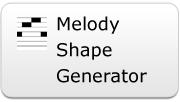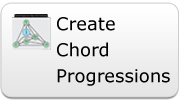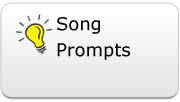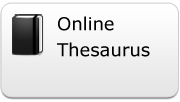Random Melody Shape Generator

Random Melody Shape Generator Instructions
- To generate a melody shape all you need to do is click on the “Generate Melody Shape” button. Each time you press this button it will create a new shape.
- Once you have a melody on the screen, play the notes on the instrument of your choice.
- If the note leap seem too large consider transposing the note up or down an octave. Especially with note C and B.
- Feel free to tweak the melody shape to improve the sound of the melody by
- shifting the shape by moving the last note to the first position.
- clipping notes by removing any you don’t want.
- When you find a melody shape that is appealing to you, you can save it by printing it. To do that all you need to do is press the “Print Melody Shape” button.
- From here you can enter the notes into your notation software.
- This app does not provide any rhythm motifs. You can create your own rhythm by playing around with the melody shape or you can go to the Random Rhythm Motif Generator for rhythm ideas.
- The next step would be to extend and modify the melody by using music composition techniques like: Repetition, Imitation, Inversion, or Retrograde.
About Melody Shapes
When composing music for a song, the melody needs to be strong and memorable. To do this a melody should have a shape contour.. There are five basic contours.
- Flat – This is demonstrated by the melody pitch stay on the same note. A flat melody can be used to create tension, release and anticipation. Use sparingly as it can get monotonous and boring.
- Ascending – This is demonstrated by the melody pitch note series rises in an upward direction. An ascending melody can be used to create joy, happiness, as well as building emotions.
- Descending – This is demonstrated by the melody pitch note series lower in a downward direction. A descending can be used to create sadness, weakness, or defeat.
- Rainbow – This is demonstrated by the melody’s series of notes pitch first ascending upward to a “peak” note then the pitch descend downward. A rainbow melody is a combination of ascending and descending shapes. As the arc rises emotion can build to a climax. Once the climax is reached it the arc then falls providing relief. Think of it this way: Tension – Climax – Release.
- Bucket – This is demonstrated by the melody’s series of notes starting at a “peak” position then the pitch descends downward. Once it hits the bottom, the melody note ascend upward and return at or near the “peak” position. The bucket shape is a combination of both descending and ascending melody shapes. With this shape the melody starts at a high point the falls until it hits bottom then climbs it way out.
Every melody will contain any one of the shapes. Many times there will be a combination of shapes in a melody. One important factor to consider is these shapes bring interest, emotion and variety to a melody.











this place is pretty cool
Is there an app on the app store? If so what’s it called?
Currently the only place you can use this app is on this website.
Your website is not working right .
There is nothing to click on .
Website has been update and tool will now work
This is a great tool. What do the notes under the generated melody shape represent?
The letters along the top represent the notes on the scale. The graph below the letters show the relative position of the note. When all the notes are shown it produces a graphical representation of the basic melody shape.
Would love an option to:
– suggest what notes to use then be able to create random variations of these notes
– plus be able to save to midi
These are some ideas I’ve considered implementing. These are still in development. Hopefully These options will be available soon especially the ability to download the midi.
Hello, I would first like to say thanks man seriously…I literally laughed out loud how simple your site makes music it’s amazing bro or sir lol ….it’s feels amazing to be learning from selfless people…I hope you have great karma because I’m sure your site brings knowledge and fun to many live, even though folks still complain …It’s ok your the man and thanks again….One question for the melody shaper…Is the key of the random melody in C Major or A minor ?
Thank you. I am glad you find the tools on the site useful. In answer to your question, the Random Melody Shape Generator uses the notes from the “C” scale. The A minor scale is relative or a mode of the C scale. For even more expansive ideas you can think in modes. Which means that if you decide to make “D” the tonic then the mode would be Dorian ans so on through the various modes.
Are these melodies intended to be a 4 beat measure in 1/16ths (4/4)? Some of them include 7 or 9 beats. Thanks!
joins the question and also how to modify?
Take the notes generated from the app transfer to notation software or paper. Add some rhythm to the notes. You can use the Random Rhythm Motif Generator found on this site http://learnhowtowritesongs.com/random-rythmn-motif-generator/. Merge the two ideas. Once you have a baseline you can change and modify the melody until you come up with something you like.
This tool does not indicate note duration or rhythm. It is just a continuous string of notes that form a melody shape. To fully use the app to its fullest you will need to add a rhythm to the pitches. There is another app on this site called Random Rhythm Motif Generator. Use that tool to divide the notes into measures.